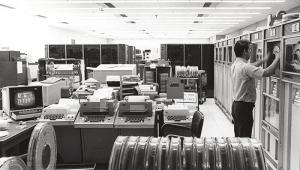We all know the seductive lure of new technology: the appeal of the latest shiny piece of kit, essential app or must-have gadget.
Councils and other public agencies are not immune from this longing. In an era of fiscal constraint and rising demand it is tempting to latch on to new technologies in the hope of delivering better services for less money.
And indeed the unfolding tech revolution can be an integral part of local government transformation.
But too often we begin our thinking about technology from the wrong place, starting with the technology itself rather than our aspirations for community. At LGiU we believe we need to reverse this. In a new paper launched by the Communities Secretary on Monday, we argue that we need to put people and communities in the centre of our approach to technology, reflecting the broader synaptic turn local government needs to make as councils move from doing things to making things happen.
To do this we need to think about how emerging technologies support councils and communities through a three stage pathway of what we might, for simplicity, call public service reform, but which is in fact a more wholesale transformation of the respective roles of institutions, citizens and communities. This three stage pathway involves, efficiency, engagement and empowerment.
We can drive efficiency by using big data to understand better our communities. By interpreting these complex and rapidly changing data sets, we can connect indicators and draw correlations we have not done before. This can enable us to predict, anticipate and ultimately prevent problems occurring within our neighbourhoods, from troubled families to social unrest, as well as ensure targeted, streamlined services.
We can engage communities and enable collaboration and new partnerships between local citizens, local businesses and the state through cloud technology, which allows us to store data on remote servers such as DropBox, Flickr or Google Docs. We can share information, communicate and connect unrestricted by place; enabling us to harness collective, shared intelligence to solve local problems together.
We can empower citizens to participate and interact in the design of their communities through mobile technology, enabling them to engage flexibly and remotely. Smartphone technology can similarly free the way in which the council operates; allowing council staff greater mobility whilst also encouraging efficiencies.
And we can already see examples of what this might mean in practice. In Norfolk, we see the council incubating and working in partnership with a number of SMEs to understand how best to transform the way they deliver local services. In Flanders, we see the government streamlining and personalising services through use of e-ID cards for citizens and in Glasgow, we see the city running hackathons with local developers to support the design of local solutions.
Paradoxically we will best unleash the enormous potential of new technologies if we think less about technology and more about people, places and communities.
For local authorities the question must always be what sort of place they are working towards, how they are serving the interests of and working with their residents and how they could more effectively use new technology to help them do so.
In an age in which the pace of technological change exceeds the capacity of even the most agile organisation to react and adapt, it’s essential to think rigorously about how technology can be harnessed to social value and to ensure that we retain a person-centred approach to technological innovation.












